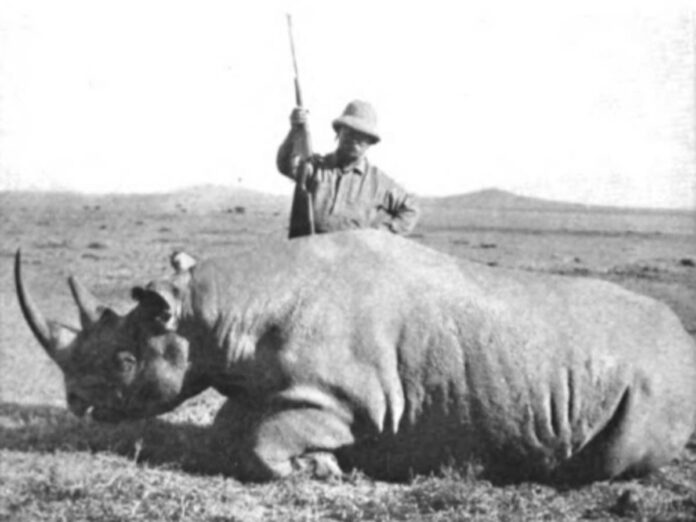The impacts of poaching and intensive hunting on rhinos may have resulted in the animals’ horns getting shorter, a new study has found.Through careful analysis of 135 years’ worth of photographs, a research team at the University of Cambridge have found evidence that all species of rhino: white, black, Indian, Javan and Sumatran have seen their horn lengths decrease “significantly” over time.The researchers said that due to strict security protocols preventing scientists from accessing real rhino horns for study – due to their huge value – this is the first time horn length has been studied over a long timeframe.Rhino horns command exorbitant prices and despite the animals being critically endangered, their horns, obtained by poaching, are in enormous demand both as a financial investment and for their use in traditional medicines in China and Vietnam.But hunting has not only caused severe declines in rhino populations – the researchers suggest that decades of shooting rhinos with the longest horns have increasingly left smaller-horned survivors, which have reproduced more and passed on their smaller traits to future generations.Similar traits have been shown in other animals before, but never rhinos.’We were really excited that we could find evidence from photographs that rhino horns have become shorter over time. They’re probably one of the hardest things to work on in natural history because of the security concerns,’ said Oscar Wilson, formerly a researcher in the University of Cambridge’s Department of Zoology, and first author of the report. Wilson, who is now based at the University of Helsinki, Finland, added: ‘Rhinos evolved their horns for a reason – different species use them in different ways such as helping to grasp food or to defend against predators – so we think that having smaller horns will be detrimental to their survival.’In order to conduct the study on horn size, the researchers also measured other body parts on each rhino photograph, including body and head length, so that horn length could be accurately measured in proportion to body size.As well as the photographs, the team examined drawings made over the last 500 years.The researchers said they also saw a dramatic shift in human perceptions of rhinos around 1950 when the animals became the focus of conservation efforts rather than hunting.’We found that we can use images from the last few centuries to visualise how human attitudes towards wildlife have changed, and how artists have influenced these views,’ said Dr Ed Turner at Cambridge’s Department of Zoology, senior author of the report.Many hundreds of photographs showing rhinos shot dead by hunters, taken in the late 19th and early 20th century, are included in the collection. These include a photograph of American President Theodore Roosevelt, taken in 1911, standing triumphantly over a black rhino he had just killed.Other early images show rhinos as huge, frightening animals chasing humans. The researchers said they believe the images helped justify the hunting of these animals.”The images suggest that there was very little effort to promote rhino conservation to the public before the 1950s. But after this the focus suddenly changed from hunting the animals to trying to keep them alive,” they said.This shift coincided with the collapse of European empires when African countries became independent and European hunters no longer had easy access to Africa for hunting.The research is published in the journal People and Nature.
Rhino horns getting smaller due to poaching, archive photos reveal
Sourceindependent.co.uk
RELATED ARTICLES


